Abstract
Optimism is growing that the near future will witness rapid growth in human-computer interaction using voice. System prototypes have recently been built that demonstrate speaker-independent real-time speech recognition, and understanding of naturally spoken utterances with vocabularies of 1000 to 2000 words, and larger. Already, computer manufacturers are building speech recognition subsystems into their new product lines. However, before this technology can be broadly useful, a substantial knowledge base is needed about human spoken language and performance during computer-based spoken interaction. This paper reviews application areas in which spoken interaction can play a significant role, assesses potential benefits of spoken interaction with machines, and compares voice with other modalities of human-computer interaction. It also discusses information that will be needed to build a firm empirical foundation for the design of future spoken and multimodal interfaces. Finally, it argues for a more systematic and scientific approach to investigating spoken input and performance with future language technology.
Full text
PDF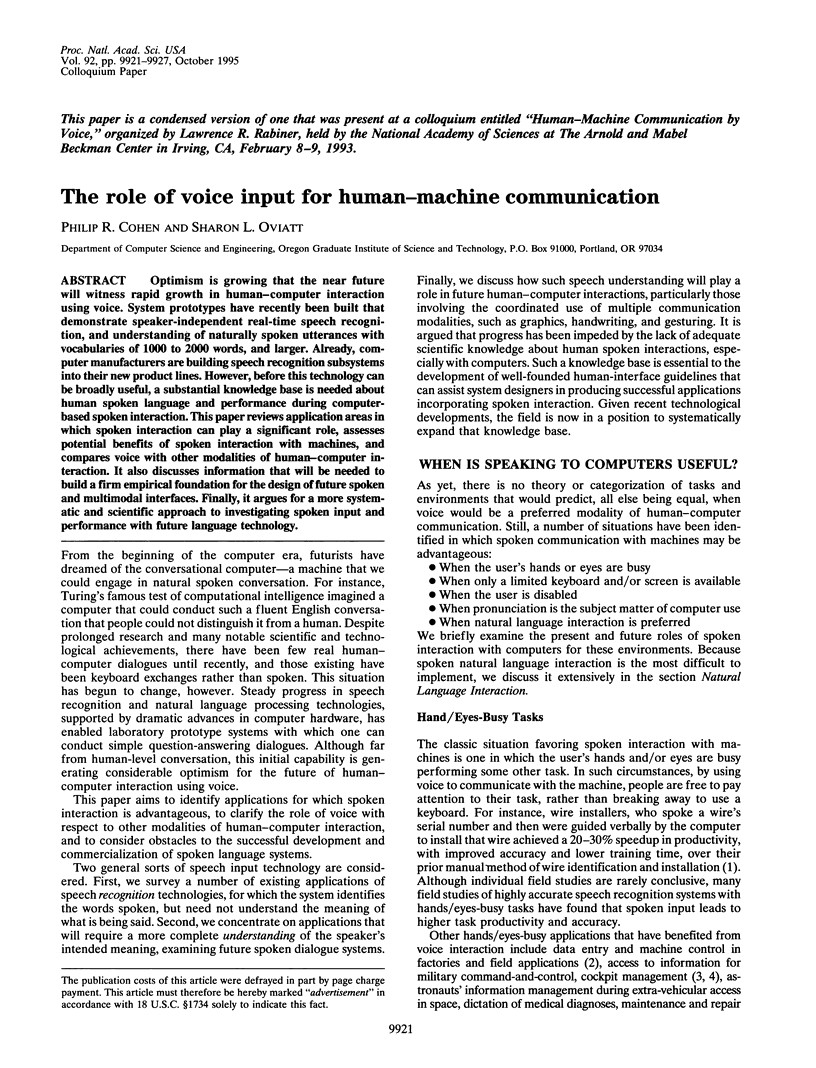
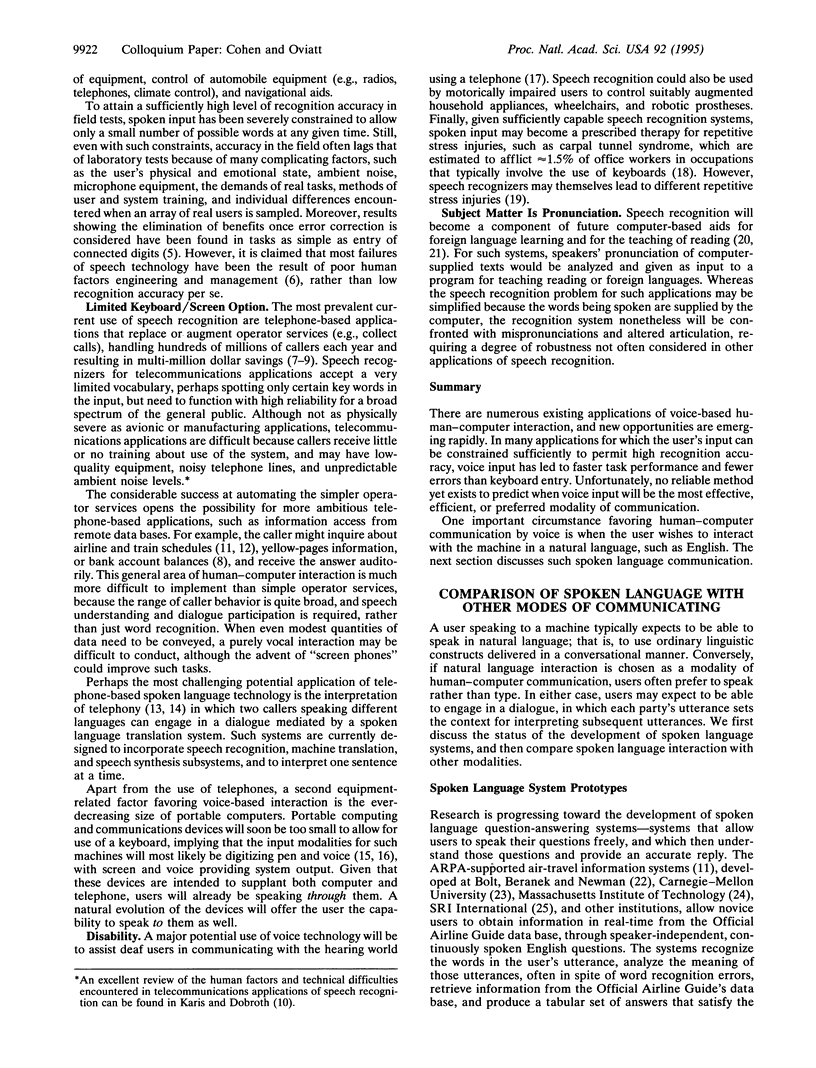
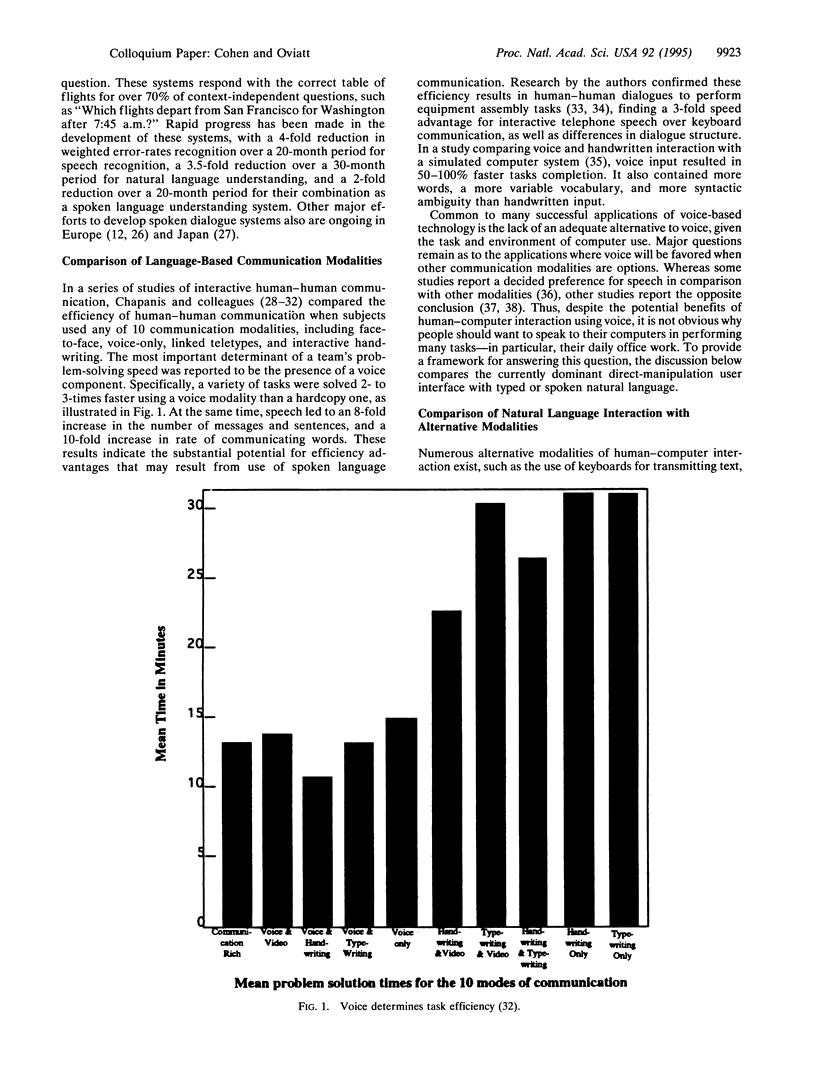

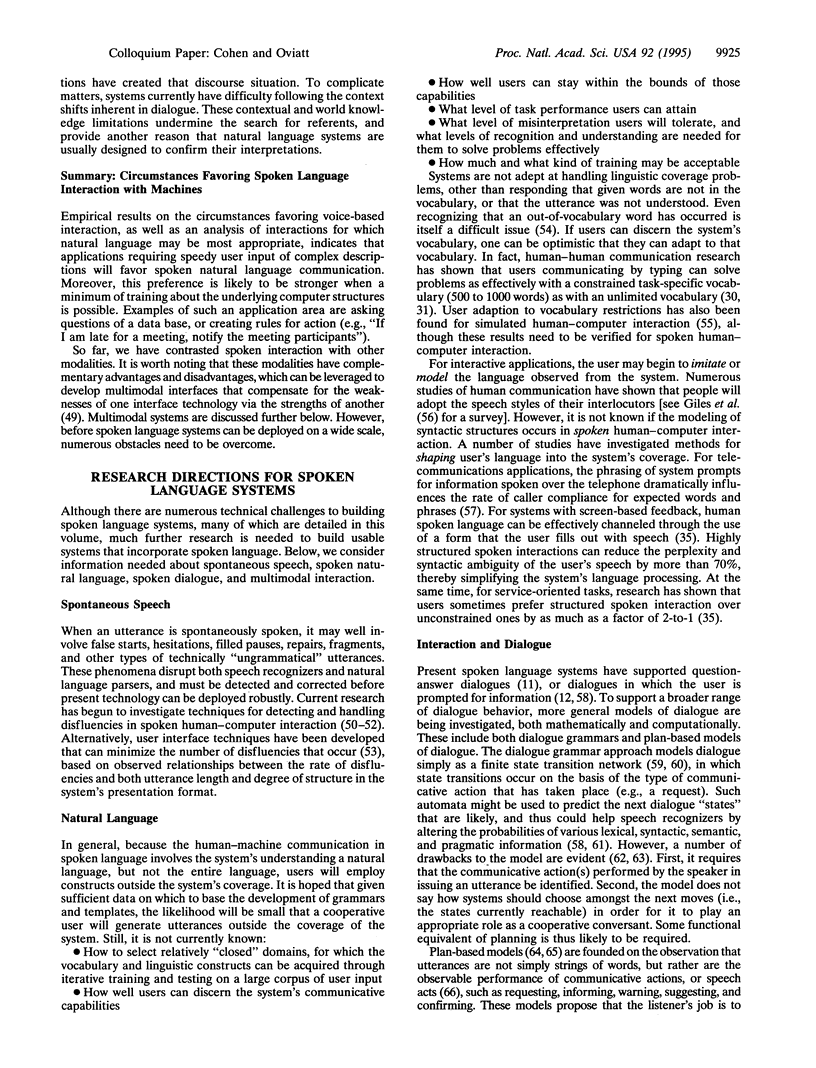
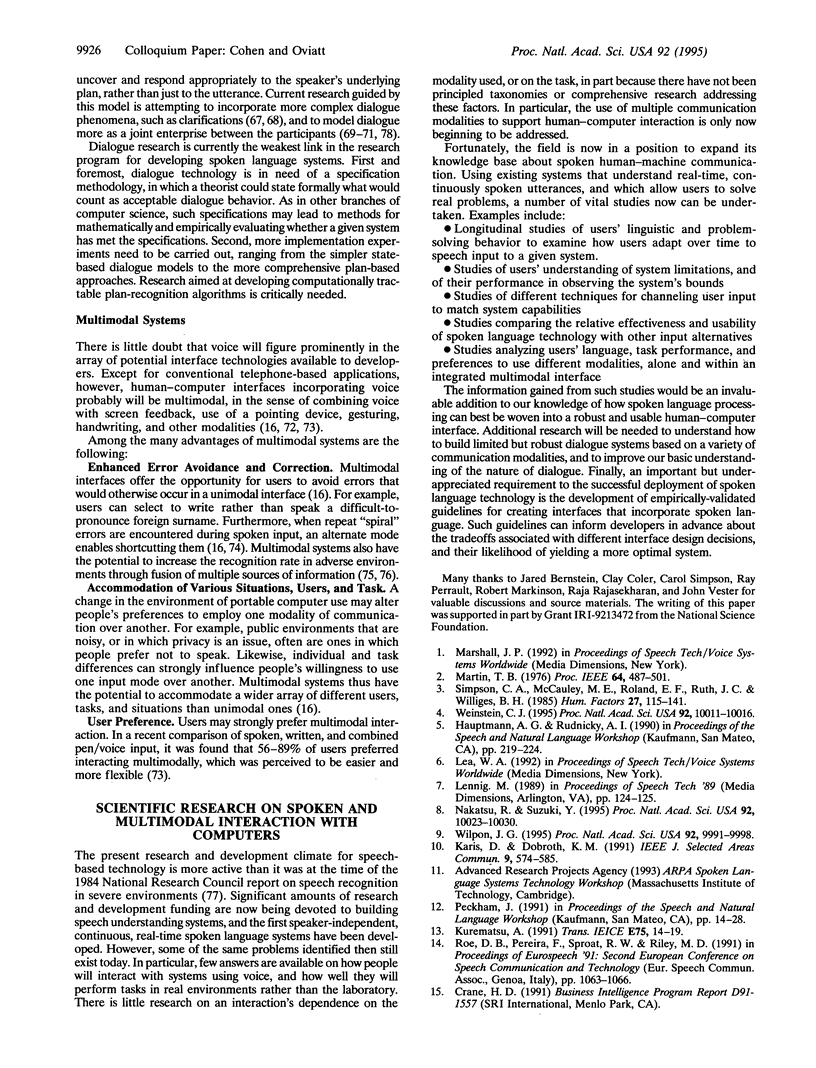
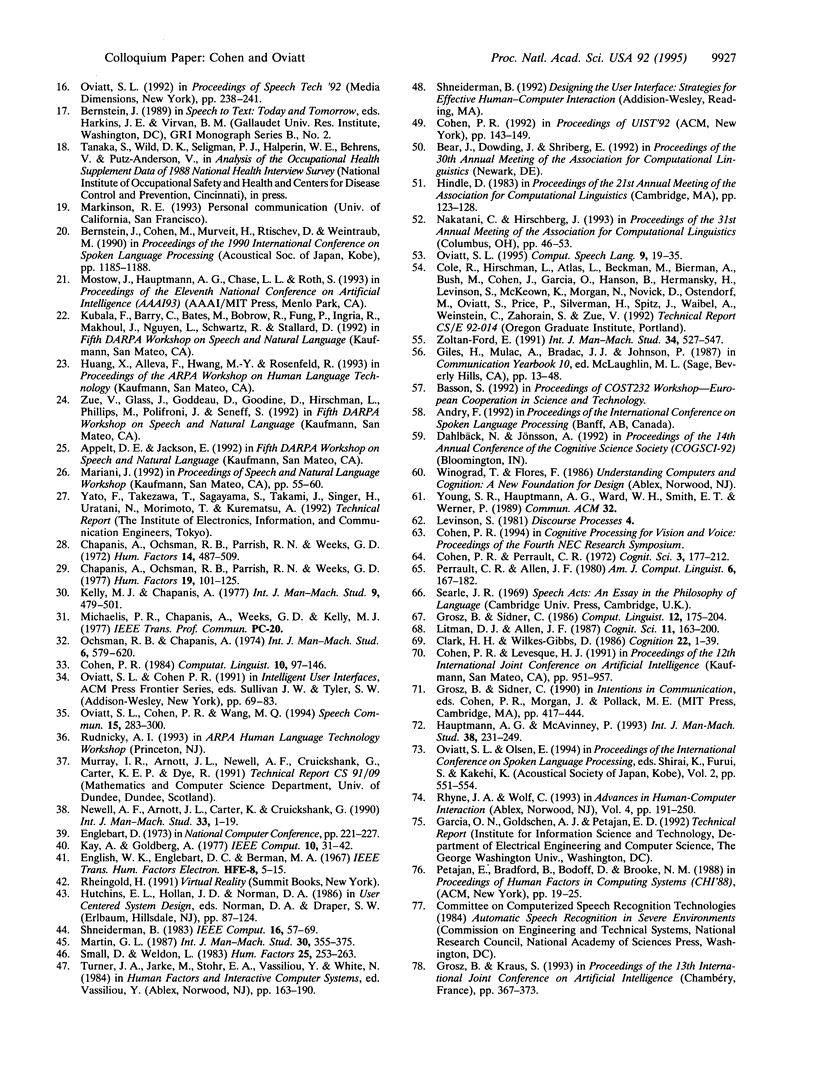
Selected References
These references are in PubMed. This may not be the complete list of references from this article.
- Clark H. H., Wilkes-Gibbs D. Referring as a collaborative process. Cognition. 1986 Feb;22(1):1–39. doi: 10.1016/0010-0277(86)90010-7. [DOI] [PubMed] [Google Scholar]
- Nakatsu R., Suzuki Y. What does voice-processing technology support today? Proc Natl Acad Sci U S A. 1995 Oct 24;92(22):10023–10030. doi: 10.1073/pnas.92.22.10023. [DOI] [PMC free article] [PubMed] [Google Scholar]
- Simpson C. A., McCauley M. E., Roland E. F., Ruth J. C., Williges B. H. System design for speech recognition and generation. Hum Factors. 1985 Apr;27(2):115–141. doi: 10.1177/001872088502700201. [DOI] [PubMed] [Google Scholar]
- Weinstein C. J. Military and government applications of human-machine communication by voice. Proc Natl Acad Sci U S A. 1995 Oct 24;92(22):10011–10016. doi: 10.1073/pnas.92.22.10011. [DOI] [PMC free article] [PubMed] [Google Scholar]
- Wilpon J. G. Voice-processing technologies--their application in telecommunications. Proc Natl Acad Sci U S A. 1995 Oct 24;92(22):9991–9998. doi: 10.1073/pnas.92.22.9991. [DOI] [PMC free article] [PubMed] [Google Scholar]


